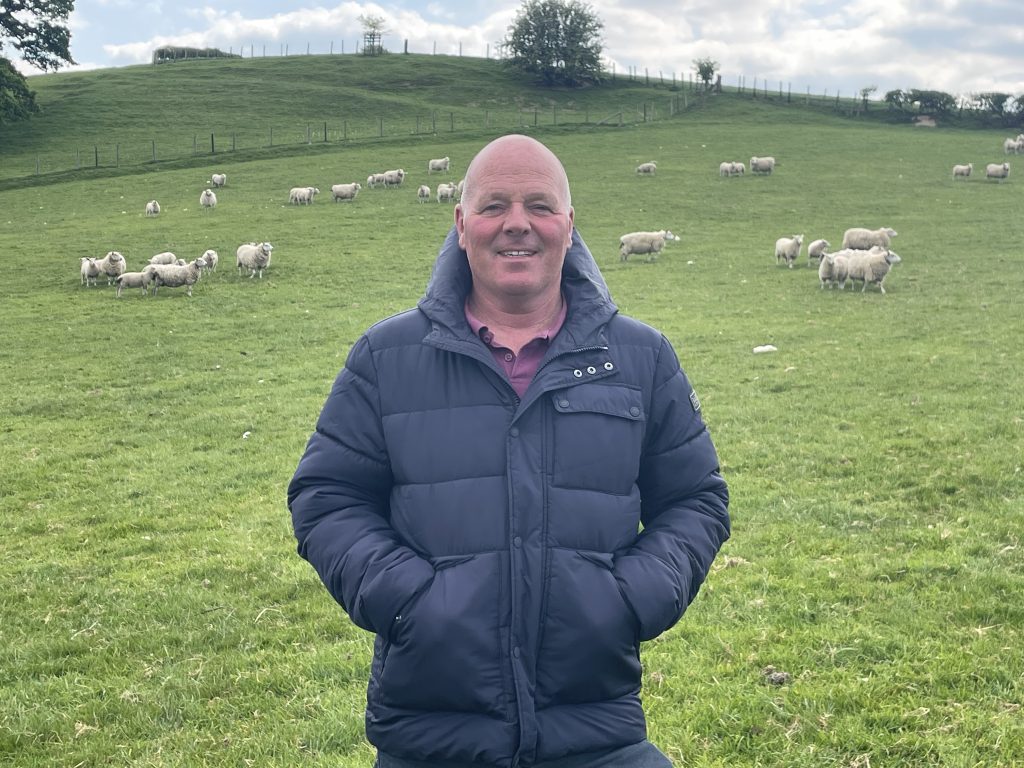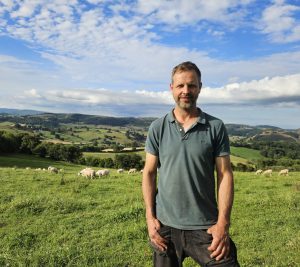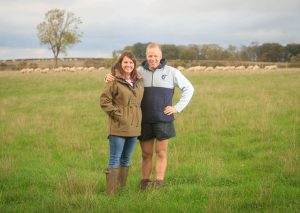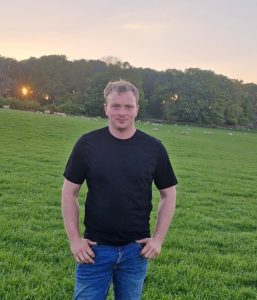With thanks to Richard and Sarah Wilde, Welshpool, Powys
Driving for a more sustainable sheep farming business fit for purpose in any future regime led Richard and Sarah Wilde to make one change; they agreed to introduce modern genetics to their traditional Welsh Mule flock – initially the Abermax terminal sire followed by the Aberfield to develop an improved damline.
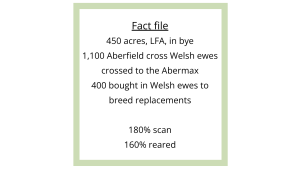
Almost a decade on Richard says: “We’ve been able to choose two different breeds from Innovis to suit our system and I feel we now have a more balanced enterprise. I like the Aberfield cross Welsh ewe, we’re now breeding our own replacements and we’re consistently producing an easy fleshed 20kg deadweight finished Abermax cross lamb within spec to meet our Tesco Sustainable Lamb Group (TSLG) contract.
“For starters introducing Innovis genetics has taken the pressure off the workload, particularly at lambing when there’s just the two of us doing the nightshift, and we have significantly fewer costs. Both the Abermax and Aberfield have been developed with narrow shoulders, consequently lambing is definitely easier and we’ve reduced lambing issues by approximately 30% along with ewe recovery and the vet and med bill.
Both the Abermax and Aberfield have been developed with narrow shoulders, consequently lambing is definitely easier…
“We find these lambs are sharp. They’re soon up and away. The ewes have plenty of milk and certainly look after their lambs.”
Richard says he initially read in the press about Innovis’s performance recorded rams and their ability to work. “They’re definitely doing what it says on the tin. Being forage bred and reared, they haven’t been pushed like some rams so once they’re home we don’t have to nurse them or feed them any concentrate. They’re lasting for up to four working seasons, that’s at least one more than the Continental terminal sires we used to use.
“Furthermore, we’re now able to virtually double the number of ewes we put to one ram. Continental ram to ewe ratio used to be 1:40, whereas nowadays its one Abermax to 70 ewes, and one Aberfield to 80 ewes, and despite the workload, these rams keep themselves in BCS 2 to 3, a lot better than some other breeds.”
Aware that Aberfield cross ewe lambs were in demand, the Wildes agreed to breed their own replacements to ensure a ready supply. Back in 2020 they began to buy broken mouth Welsh Mule ewes to cross with the Aberfield and sell in wool after weaning the lambs. “The practice works really well. We annually select up to 250 ewe lambs for replacement purposes and finish the rest.”
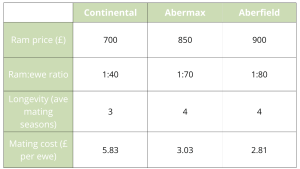
When it comes to investing in rams either at Innovis Aberystwyth sale or one of its selection days, Richard says: “I like a good strong looking ram, however when selecting a new one I do use EBVs particularly for the Aberfield’s prolificacy and ease of lambing since I’m aware he’s going to influence the flock for up to 10 years. We’re buying properly performance recorded rams, so we have that assurance. Innovis can accurately predict how the sheep will breed and it has large populations of sheep commercially farmed, so they come under a lot of selection pressure.
“We also consider we’re working to develop a long term working relationship with an established company; in the event we did have an issue with a ram, then we’re confident Innovis would manage and replace.”
Lambs start to reach 20kg target finishing deadweight fom 14 weeks and the entire crop gone by end November. “We draw loads of approximately 150 head on a fortnightly basis and transport to a local TSLG collection centre. We prefer to sell deadweight, it takes the risk out of the marketplace and minimises the labour requirement.”
